What are the most beautiful churches in Paris? Among the 140 or so churches in the capital some are veritable architecture marvels!Whether you’re a believer or not, it’s always a good idea to open the doors of these buildings.
So which churches should you visit in Paris? Here are my 15 favorite churches, classified by district. Go to the end of the article to find a useful map showing their locations.
Summary
Saint-Roch church (1st district)
Located in the heart of Paris, just a stone’s throw from the Louvre, the Saint-Roch church is one of the largest in the France capital. Its nickname of “parish of artists” comes from the fact that many artists are buried there: André Le Nôtre, Pierre Corneille or the painter Fragonard rest there.
Its construction began in 1653 and Louis XIV laid the first stone! Due to lack of funds, the work dragged on and progressed in several phases: the body of the church was erected until 1690, a chapel dedicated to the Virgin was built by Jules-Hardouin Mansart in 1706, then the façade was raised in 1736!
To take advantage of the beautiful volumes of the church it was richly decorated by calling upon the greatest painters and sculptors of the time. Unfortunately, Saint-Roch suffered the ravages of the Revolution and did not escape the looting. In calmer times the church was endowed with new artworks, some of which came from destroyed churches, so that today Saint Roch is like a museum of the French school of the 17th and 18th centuries. As for the organ, it is composed of 2832 pipes!
Saint-Germain-l’Auxerrois church (1st district)
The construction of this church took place between the 12th and 15th centuries and was punctuated by many events. To know everything about the history of Saint-Germain-l’Auxerrois I invite you to consult its official website. Its proximity to the Louvre, palace of the Kings until the 17th century and place of residence of artists under the Ancien Régime, will make Saint-Germain-l’Auxerrois the nicknames of “parish of the kings of France” and “parish of the artists”.
Saint-Eustache church (1st district)
The construction of this large church located in the heart of Paris began in 1532. It was Francis I who laid the first stone. The work was completed only in 1633 with a hybrid architecture between Gothic and Renaissance which imposes by its dimensions: 105 m long, 43.5 m wide and above all 33.46 m high under the vault!
Saint-Eustache was the parish of Colbert, a powerful minister of Louis XIV whose tomb can be admired in the church. Other celebrities are linked to Saint Eustache: Richelieu and Molière were baptized there; Sully and Lully were married there; Louis XIV will make his First Communion there; the funerals of Mozart’s mother, Mirabeau and La Fontaine will be celebrated there…
During the Revolution the church was turned into a temple of Agriculture. A restoration was carried out in the 19th century under the direction of Baltard, the famous architect of Les Halles, unfortunately demolished in 1970.
The organ is made up of nearly 8000 pipes which makes it the largest in France! There are some contemporary works of art such as Keith Haring’s triptych representing “The Life of Christ”, a work made shortly before his death and donated by his foundation in 2003.
The Sainte Chapelle (1st district)
The Sainte Chapelle is the only building in this selection which is subject to a charge. The cult is no longer celebrated there and it is now one of the most visited monuments in France. Built at the request of Louis IX, known as Saint-Louis to house the relics of the Holy Crown of Thorns, the Sainte Chapelle is distinguished by its original architecture composed of a low chapel and a high chapel, as well as by its stained glass windows: 15 glass panels about fifteen metres high allow this unusual chapel to be immersed in a bath of light and colour.
The Sainte Chapelle has been ravaged by the Revolution, and has had to be restored several times, the last of which, carried out between 2008 and 2015, has restored the sumptuous stained glass windows to their full splendour.
LEARN MORE : The eventful history of the Paris Sainte Chapelle
Saint-Paul-Saint-Louis Church (4th district)
The first stone of this church, installed in the heart of the Marais, was laid by Louis XIII in 1627. The first mass was celebrated there 14 years later by Richelieu. Initially called only “Saint-Louis” it took the double name “Saint-Paul-Saint-Louis” at the beginning of the 19th century in memory of the Saint-Paul church located nearby and destroyed at the end of the 18th century.
During the Revolution this church was used as a repository for books and artworks recovered from nearby places of worship. It was subsequently plundered several times, notably during the Three Glorious years and then during the Commune. One of the oldest graffiti in Paris, dating from the Commune and claiming “the French Republic or death”, can be found there! (thanks to Laure Pressac for this information!).
For the anecdote, the parish registers keep the autograph of Victor Hugo, who had indeed had to sign the said register on the occasion of the marriage of his daughter Léopoldine (then a minor) with Charles Vacquerie in February 1843.
Saint-Louis-en-l’Île church (4th district)
On the Île de la Cité, this church is dedicated to Louis IX, better known as Saint-Louis, who regularly came to pray there. It is also here that he is said to have taken the Cross to deliver Jerusalem in 1269.
It is hard to imagine it today but the Ile de la Cité is partly artificial, it was born in 1614 by filling in the arm of the river that separated the different islets. From 1623, at the request of the inhabitants, a first chapel called Notre-Dame-en-l’Île was built and renamed Saint Louis in 1634.
This first chapel, however, had a short life: it quickly became too small in the face of population growth and was demolished in 1642 to allow the construction of the present church. François le Vau, brother of the famous Versailles architect Louis le Vau, drew up the plan. Due to lack of funds the construction site had difficulty starting: the first stone was not laid until 1664 and the construction work was completed only in 1726.
During the Revolution Saint-Louis-en-l’Île was largely plundered and used as a literary depot. We owe the beauty of the church as we know it today to Louis-Auguste Napoléon Bossuet who devoted a large part of his fortune to decorating the edifice.
Saint-Etienne-du-Mont church (5th district)
One could easily pass by this church which seems very small compared to its big neighbour, the Pantheon. However, Saint-Etienne-du-Mont is one of my favorites. Built between the end of the 15th century and the beginning of the 17th century it has the particularity of being the only church in Paris and one of the rare churches in France to have preserved its rood screen that separates the choir from the nave. The latter is a beautifully carved stone lace.
At the back of the building, in the Communion Chapel, is the stained-glass gallery with sublime painted stained-glass windows dating from the 16th or 17th century. Saint-Etienne-du-Mont also houses the tomb of the poet and playwright Jean Racine.
Saint-Germain-des-Prés Church (6th district)
Located in the Latin Quarter this church is a former Benedictine abbey founded in the mid 6th century by King Childebert I and the Bishop of Paris, Saint Germain. Until the creation of the basilica of Saint-Denis, the abbey of Saint-Germain des Prés was the royal necropolis.
The church as we know it today was built in several phases. The oldest parts (the nave and the transept in particular) date from the 10th century, the choir was built in the 12th century in a primitive Gothic style. The Revolution put an end to the activity of the abbey. Saint-Germain-des-Prés then became a saltpetre factory before the cult was re-established there in 1803. A campaign to restore the church was carried out between 1821 and 1854.
What is striking in Saint-Germain-des-Prés are the frescoes that cover both the walls and the vault. The latter is studded with stars! This painted decoration is all the more admirable since the vast restoration campaign started in 2015. You can still contribute to support this restoration by adopting one of the stars of this magnificent ceiling.

Saint-Sulpice church (6th district)
Saint-Sulpice is one of the most famous churches on the left bank of Paris. Since the fire at Notre-Dame it has served as a cathedral for great ceremonies.
Its construction was decided in 1636 to replace a previous church that had become too small. Work began in 1646 and was completed in 1870! Unfortunately, it was damaged by Prussian shells as early as 1871 and had to be restored afterwards. With its 120 meters long, 57 meters wide and 30 meters high, this church is particularly imposing. Its architecture mixes several styles due to the spread of the work over nearly 250 years. To see, in particular, the paintings of Delacroix in the chapel of Saint-Anges.
Saint-François-Xavier Church (7th district)
We are now behind the Invalides to discover a church designed during the Second Empire. Its construction began in 1861 and was completed in 1873. Its beauty comes from its architecture but also from its decoration: numerous donations have made it possible to welcome paintings by great masters such as The Last Supper, a masterpiece by Tintoretto.
Sainte Clotilde Basilica (7th district)
This is a relatively recent building since the construction of Sainte-Clotilde took place between 1846 and 1857. We owe this first church in Paris in the neo-gothic style to the architect François Gaud, originally from Cologne, who was inspired by the choir of the cathedral of his native city. The construction work was completed by Théodore Ballu, who designed the facade and the two spires which culminate at 70 metres.
Sainte-Clotilde was erected as a Basilica in 1896 by Pope Leo XIII on the occasion of the 14th centenary of the Clovis baptism to honour his wife Clotilde and to thank the piety of the Parisian people.
Saint-Augustin church (8th district)
Built during the Second Empire between 1860 and 1871 the Saint-Augustin church was designed by the architect Victor Baltard (known for having designed the Halles de Paris). Its “style” can be recognized by the metal frame visible inside.
This light structure made it possible to free itself from the buttresses usually found in churches, giving this building an original architecture: a narrow façade and a particularly large choir.
The organ was designed by Charles Spackman Barker. Inaugurated in 1868 it is one of the first organs to have integrated electricity. As for the dome, it is more than 80 meters high. Its pseudo-Byzantine style makes Saint Augustine an easily recognizable church in the urban landscape!
Saint-Eugène Sainte-Cécile Church (9th district)
This church was built between 1854 and 1856 at the request of Napoleon III in memory of his nephew, by the architect Louis-Auguste Boileau. The small budget devoted to the construction pushed Boileau to use inexpensive but efficient materials such as iron and cast-iron so that Saint-Eugène Sainte-Cécile is one of the first French buildings to use these materials!
Iron and cast iron made it possible to replace the traditional massive pillars with thin columns that allow you to contemplate the entire volume of the church at a glance. Stars decorate the vaults, painted yellow in the nave and blue-night in the apses.
Initially dedicated to Saint Eugene alone, the church was given the second name Sainte-Cécile (patron saint of musicians) in 1952 as a reminder of the proximity of a music conservatory whose students came to practice the organ in the church. This vocation for music also had an influence on the architecture of the church, which was deprived of bells so as not to disturb the pupils during lessons!
Notre-Dame-du-Travail Church (14th district)
Built between 1897 and 1902, this church has an original history: it was built for the workers living in the 14th arrondissement who worked on the universal exhibitions of the early 20th century. This is why it bears the name “Notre-Dame du Travail” (of work), in homage to the workers’ condition. It stands out from other churches by its marvellous metallic architecture. The organ is more recent, dating from 1991.
Saint-Honoré-d’Eylau church (16th district)
This pretty church was built at the very end of the 19th century in 1896. As often at that time a light metal structure was used which allows it, as with the church of St. Eugene St. Cecilia, to present a very airy architecture.
Map of churches
Find all the churches mentioned in this article on this map :
Many other churches are worth visiting in Paris, this is only a personal selection! If you have other favourites, please feel free to share them in comments.
Did you like this article? Pin it on Pinterest!
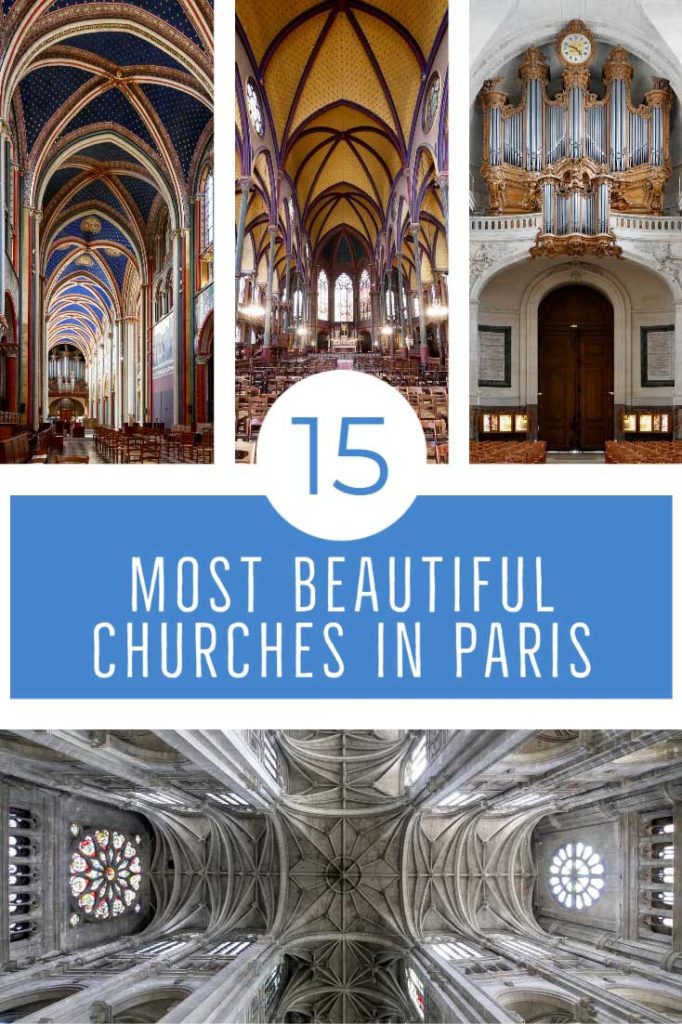




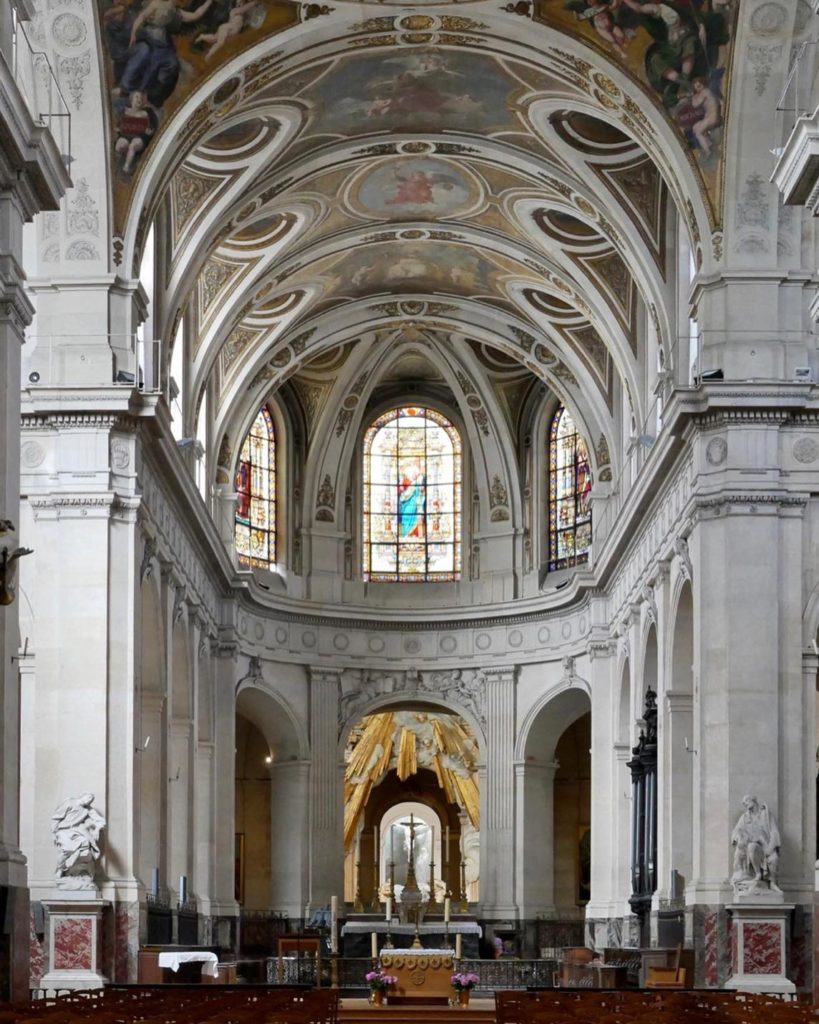



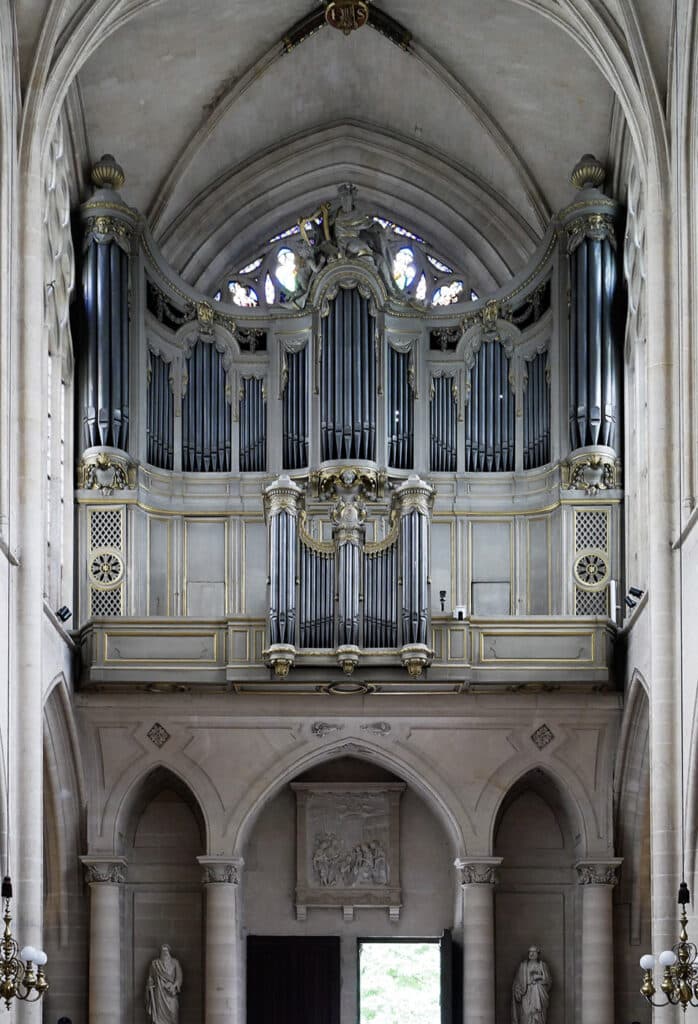


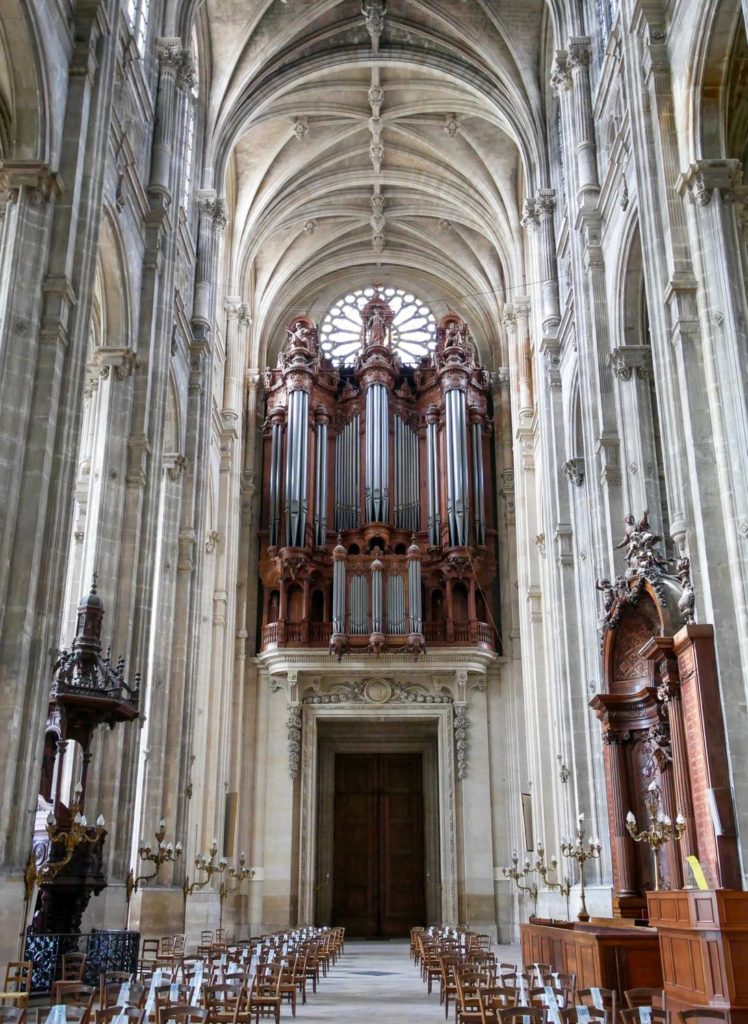






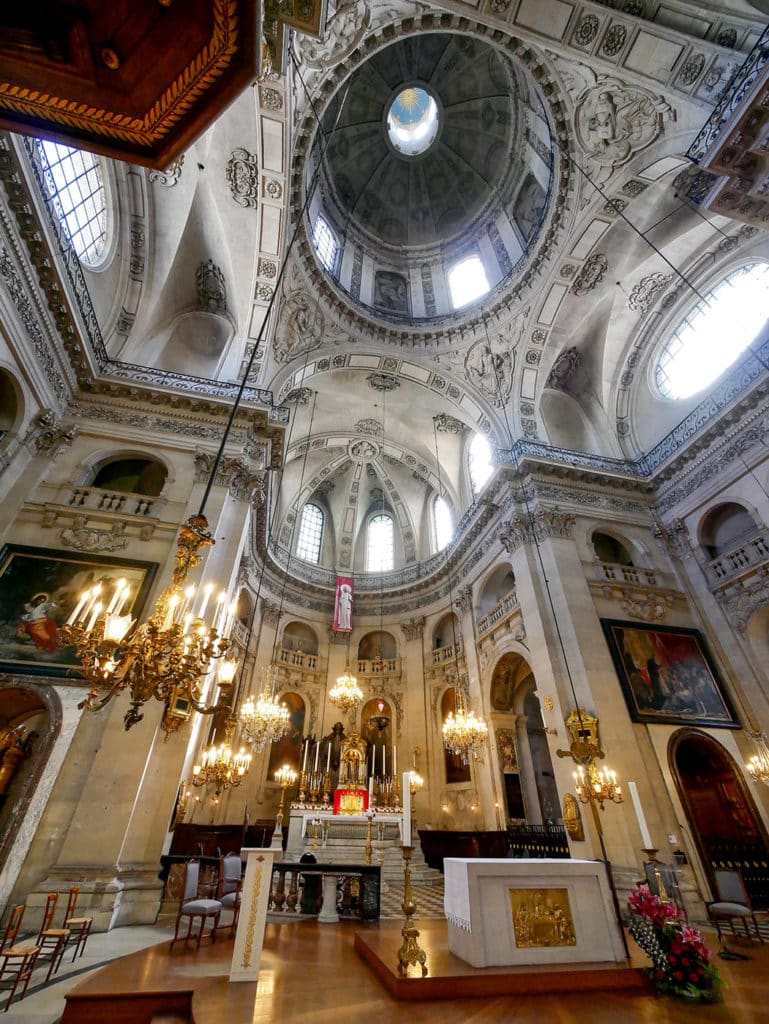








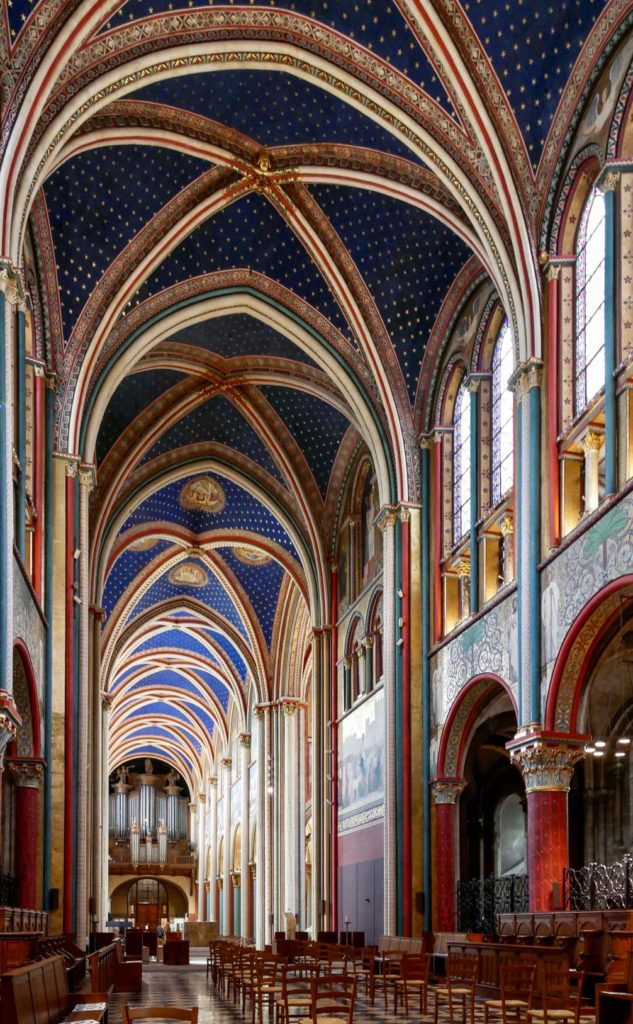









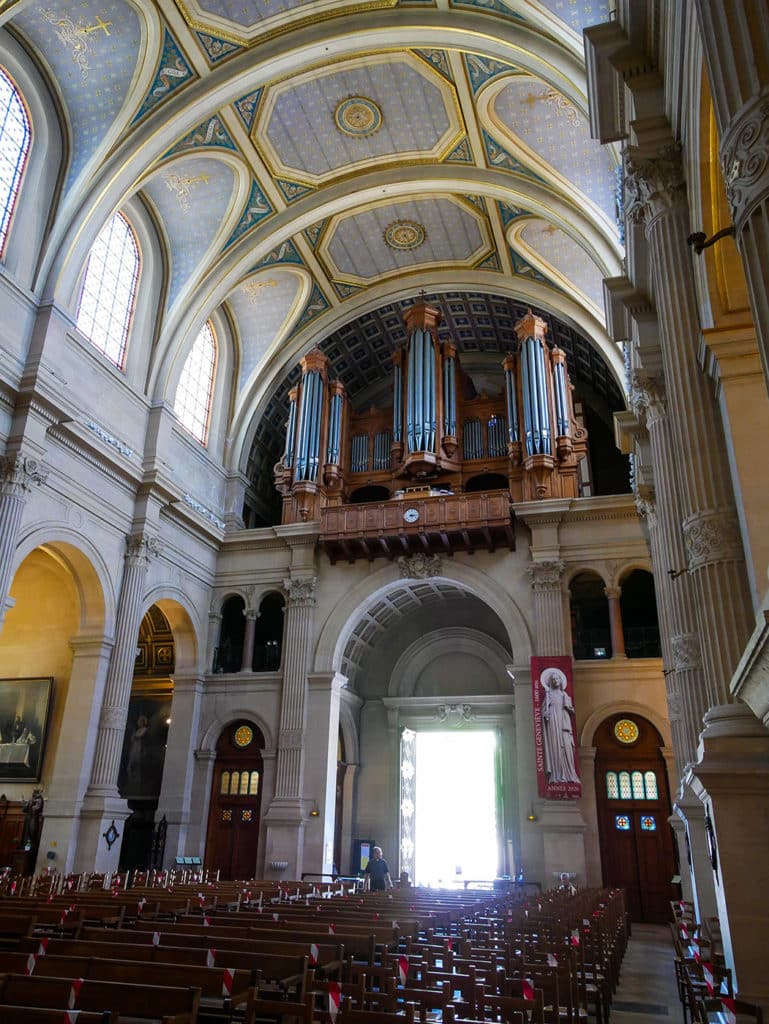


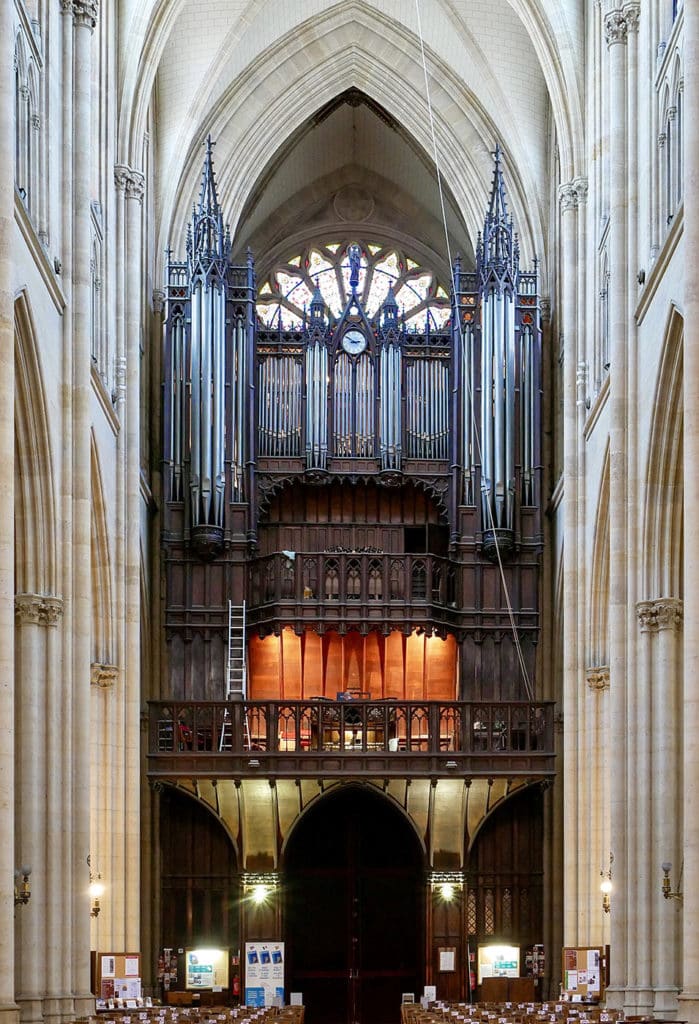



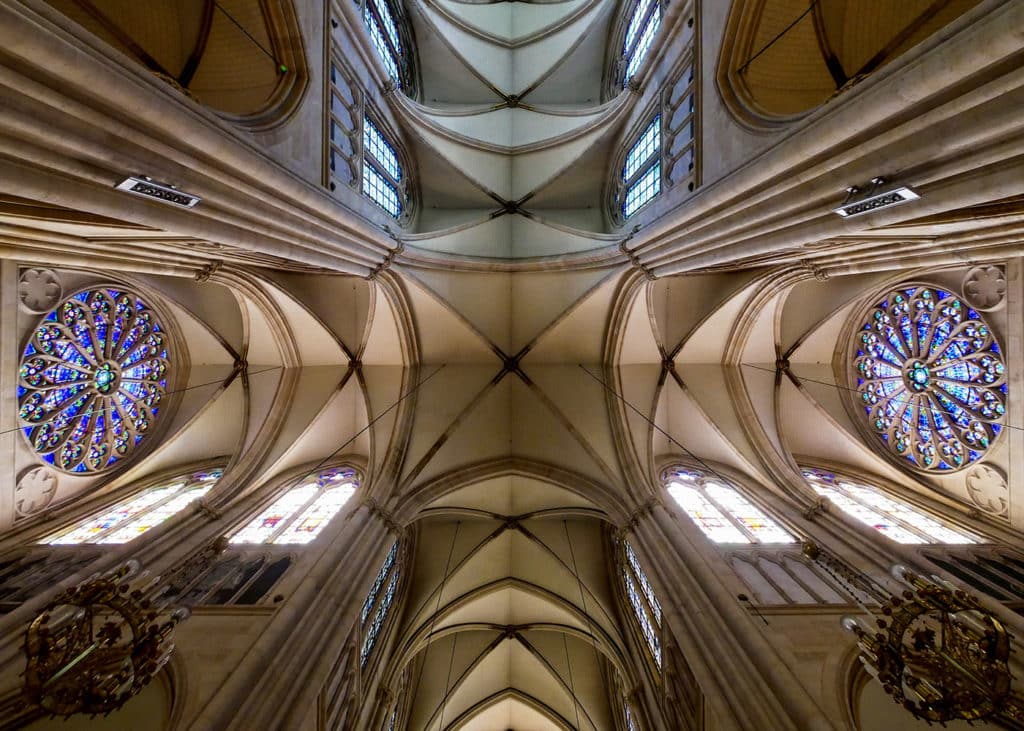











People reacted to this story.
Show comments Hide commentsThank you so much for the great exposé on the 15 most beautiful churches in Paris. I have been looking for a particular church for many years and have finally found it. I hope to revisit the Saint Supplice Church and be mesmerized again by it\’s beauty and awe!
Thanks again!
Roland